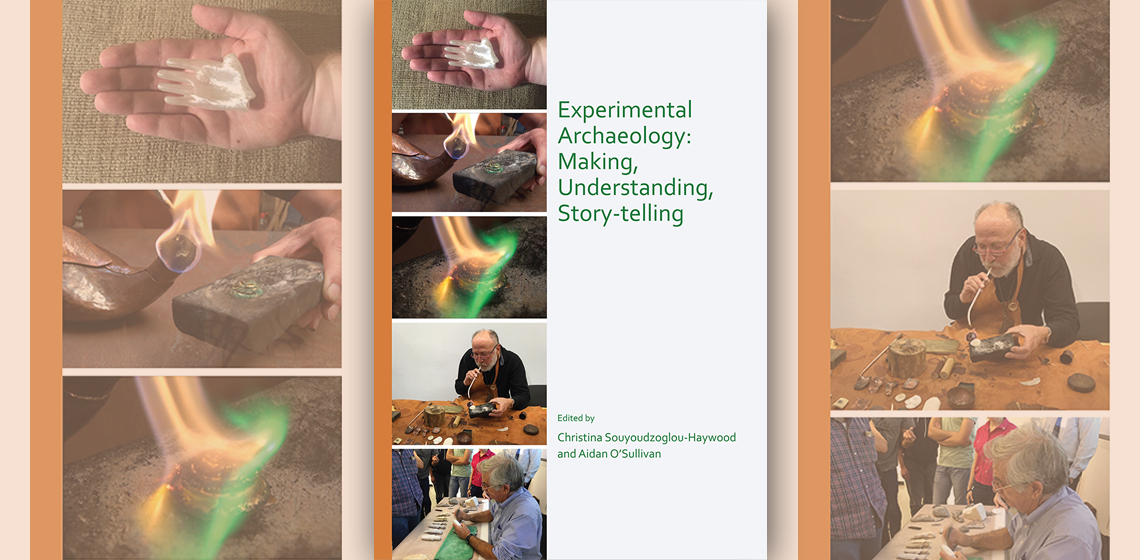
The volume contains the proceedings of a two-day workshop on Experimental Archaeology, hosted by the Irish Institute of Hellenic Studies at Athens (Greece) in October 2017. As stated in the Introduction (O’Sullivan, Souyoudzoglou-Haywood, pp. 1-4), the workshop had the purpose to connect the important role played in the field of Experimental Archaeology by the Centre for Experimental Archaeology and Material Culture of the University College of Dublin with the research carried out in Greece by scholars and museum curators over the last decades.
Moreover, the principles that drove both the workshop and the subsequent proceedings volume are that experimental archaeology should be both “knowledge-oriented” and “experience-oriented”. Namely, the scientific approach to the experimental research should be linked to the experiential and emotional approach, giving an emphasis to education and communication about life in the past.
The ten contributions of the book deal with experimental archaeological investigations in both Ireland and the Aegean area, and they span from the reconstruction of houses to the replication of artefacts. Each article contains a description of the archaeological evidence (artefacts or structures), analysed and reproduced in order to understand the overall historical and archaeological context, the manufacturing process and the technical choices made by the ancient craftspeople Sometimes, as in the case of the reproduction of a Mycenean gold granulated cone (Konstantinidi-Syviridi et al., Experimenting on Mycenean goldworking techniques, pp. 43-52), archaeometric analyses have been performed to investigate the chemical composition of the material in order to replicate it. The stages of the experiment are then carefully described. In addition to that, a description of the experience and the sensations felt is provided: the physical efforts and the suitability of the replica for its tasks, as in the case of the reproduction of Late Helladic bronze saws (Maragoudaki, “Cutting edge technology”: new evidence from the experimental simulation, pp. 27-42); the issues arisen during the manufacturing process or the mistakes made and how the crafts worker faced or fixed them (Konstantinidi-Syviridi et al., Experimenting on Mycenean goldworking techniques, pp. 43-52) and finally, the importance of the bodily and sensory knowledge of the craftspeople to understand the chemical and physical transformation of the material during the production (Day, Kobik, Reconstructing a Bronze Age kiln from Priniatikos Pyrgos, pp.63-72).
The texts are accompanied by high quality coloured imagery. Each stage of the experiment is documented with pictures and schematic reconstructions of the process. Moreover, when an archaeometric investigation has been performed on the experimental artefact, microscopic images of the material are provided with captions and graphs reporting the results of the experiment. Interestingly, as in the case of the Late Helladic saws, ancient figurative representations of craftsmen using the artefact give an idea of how they were actually used and the posture of the men at work.
Overall, the volume adds a good contribution to Experimental Archaeology as a discipline; it combines a scientific approach in the study and comprehension of ancient artefacts with the sensory and emotional aspects of the manufacturing processes. These two key aspects lead to a better understanding of life in the past, not only for scholars who investigate the ancient technology, but also for the general public that can experience, in person, some aspects of everyday life in the past.
Book Information:
Souyoudzoglou-Haywood, Christina and O’Sullivan, Aidan (eds.), Experimental Archaeology: Making, Understanding, Story-telling. Proceedings of a workshop in Experimental Archaeology. Irish Institute of Hellenic Studies at Athens with UCD Centre for Experimental Archaeology and Material Culture, Dublin. Athens, 14th-15th October 2017, Archaeopress Archaeology, 2019.